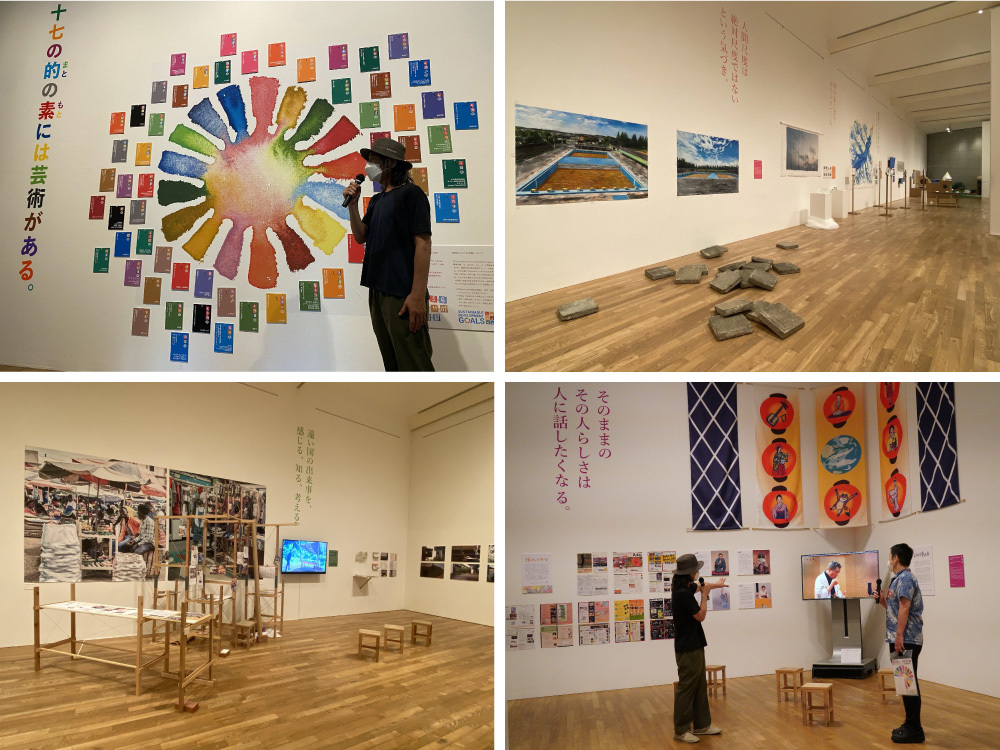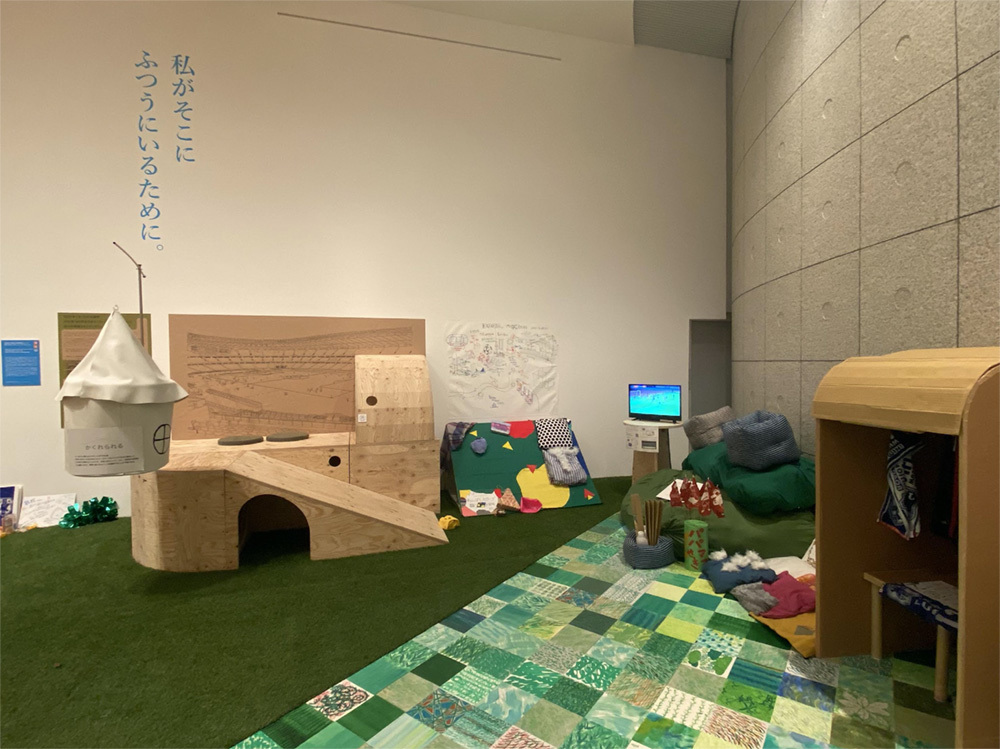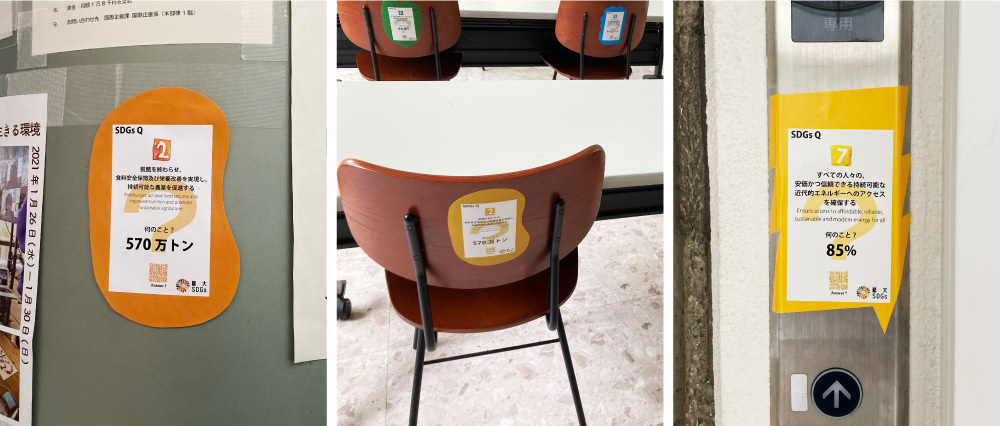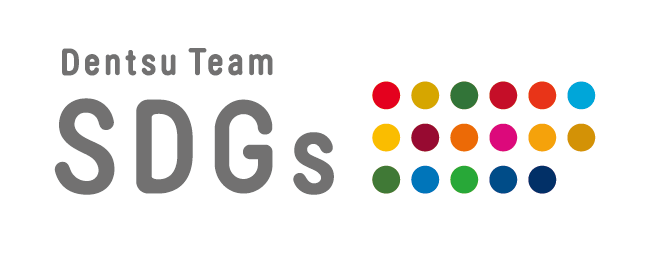What can "art" do to achieve the SDGs and solve social issues?
This series gathers insights from various experts on achieving the SDGs. Our guest this time is artist Katsuhiko Hibino. Hibino has long pursued diverse artistic activities both domestically and internationally, and in April 2022, he assumed the position of President at his alma mater, Tokyo University of the Arts.
At the start of the interview, Mr. Hibino began by stating, "Not a single one of the 17 SDG goals includes the word 'art'."
What can art contribute when companies and society engage with the SDGs?
He shared his thoughts, drawing on initiatives at Tokyo University of the Arts.

The SDGs provide an opportunity to highlight the social role of art
──Many people probably find it hard to imagine how art and the SDGs are connected in the first place. How do you view the role of art in relation to the SDGs and society?
Hibino: Regarding the question of whether art functions for society, I feel many people still perceive art as something you see in museums or hear in concert halls. They also think only a select few trained individuals become artists or creators. In other words, art currently functions only within a very limited sphere. We need art to function much more within society. Art has that power, yet the challenge is that it hasn't fully unleashed it. I believe the SDGs can be a catalyst for unleashing art's immense power and appeal.
When considering the social responsibility of art, I believe it's better to replace the term "芸術" (geijutsu) with "アート" (art). The kanji character "術" (jutsu) in "芸術" inevitably evokes images of "technique" or "skill," doesn't it? Of course, there is a technical aspect, but art is not limited to what exists in museums or concert halls.
I believe art is something that stirs the human heart, something that draws out more fundamental human power. When we see a painting or listen to music, we feel moved or shocked, right? The true appeal of art lies in its ability to provoke this kind of "stirring of the heart." Thinking this way, moments that make our hearts flutter or compel us to act exist in nature, food, sports, and human communication too. I think we can say these are also art.
To communicate how art functions in society, Tokyo University of the Arts launched the exhibition "SDGs×ARTs: Seventeen Targets, Rooted in Art" in the summer of 2021. This exhibition featured 22 projects selected from an open call within the university, all connecting artistic activities with the SDGs.

For example, the Geidai course completion program "Diversity on the Arts Project (commonly known as DOOR)" and the "Sensory Room Project" undertaken by the Design Embody Laboratory in the Graduate School of Fine Arts, Design Major, are also part of this effort.

This project attempted to use the power of art to solve the problem faced by children with sensory sensitivities who dislike loud noises and bright lights, and their families: the inability to watch sports events. Together with the Japan Football Association, a public interest incorporated foundation, we created the "Sensory Room," a space where sports can be enjoyed in a calm environment, avoiding loud noises, overly bright lights, and crowds.
The production process utilized an artistic perspective to research the Sensory Room, create prototypes for testing, and conduct research with families. For the Emperor's Cup Final held at the National Stadium in late 2021, we invited individuals with sensory sensitivities and their families to experience the Sensory Room we created. The project continues to this day.
The exhibition also featured other projects, such as the "Aomori JOMON GYOMO Project," where children in Aomori learn about "Jomon culture," and "The World Learning from Africa," which observes and documents African cities and regions through various methods.
This exhibition also served as an opportunity for participating artists to consider how their artistic activities connect to the SDGs and engage with society. Moving forward, we aim to further communicate the role of art, collaborating not only with the Tokyo University of the Arts but also with other universities and companies.
By increasing the options for SDGs initiatives, corporate activities can expand further
──Tokyo University of the Arts aims for greater collaboration with companies going forward. Mr. Hibino, what are your thoughts on corporate efforts to achieve the SDGs? Recently, some of these efforts have been called "SDG washing" (pretending to engage with SDGs without genuine commitment)...
Hibino: Even if it's just pretending to do something, taking action on the SDGs is far better than doing nothing. I don't think we need to measure SDG efforts on a hierarchy like "doing something advanced" versus "not doing much." However, the emergence of companies labeled as "SDG-washing" might stem from the current limited range of action options. I believe expanding the scope of SDG initiatives will naturally broaden corporate activities.
The Japan Football Association, which I work with, actively promotes SDG awareness. They encourage reducing plastic bottle usage, conserving electricity, and disclose the carbon emissions generated per match. Even these efforts alone can significantly influence people, especially within large corporations and organizations, leading individuals to change their daily habits.
──Many companies tackling SDGs set numerical targets. What can art contribute in response to that?
Hibino: The SDGs include many goals that can be expressed numerically. Numbers have the advantage of being immediately clear and understandable. Moreover, the appeal of numbers can also spark action. For example, if you understand concretely through numbers that "reducing plastic bottles by this amount will cut carbon dioxide emissions by this much," it might inspire you to think, "Maybe I should try to reduce even one plastic bottle I buy daily," prompting you to take action within your own life.

On the other hand, numbers can also become a reason to give up or quit if results aren't immediately visible. Therefore, I believe it's necessary to avoid thinking "my actions alone won't make a difference" and to find ways to sustain efforts. I want to show society that art can play a role in that non-numerical "emotional" aspect.
──What is Tokyo University of the Arts currently doing to advance collaboration with companies?
Hibino: Art possesses unique strengths precisely because it cannot be quantified, and that's part of its appeal. However, it's also true that evaluation, standards, and comparison inevitably accompany nearly everything in society. Therefore, we've begun research, collaborating with other universities and research institutions, to explore whether we can convey the effects of art using numerical indicators.
But this research targets emotions and the heart, so it's clearly bound to be an endless endeavor. Thanks to big data, we can now make various predictions, so perhaps it's not entirely without end... Still, I believe art ultimately remains an "unknown entity," and the meaning lies in persistently seeking answers. Moreover, society needs fertile ground to embrace the "unknown." I want to advance research on art's social role—an area previously difficult to tackle—together with various institutions.
Collaborating with other universities and companies to consider and practice the role of art
──Finally, could you tell us about your future goals, Mr. Hibino?
Hibino: Starting this year, Tokyo University of the Arts joined "Shared Campus," an international educational and research network platform. This initiative brings together art universities from Europe and Asia to tackle diverse themes like social issues, transcending national, regional, cultural, and historical differences. Currently, several institutions are exploring how art should engage with societal challenges.
Moving forward, it's essential for specialized art institutions worldwide to unite with corporate stakeholders in their respective countries. Rather than Tokyo University of the Arts striving alone, I want us to tackle global challenges together with art universities and companies worldwide. During my six-year term as president, I aim to create "spaces for co-creation" while discovering and communicating art's role in society.
● Please also see the following regarding Geidai and the SDGs
Art Has Long Been About SDGs: The Present and Future of Geidai's SDGs
 TeamSDGs collaborates with various SDG stakeholders to disseminate information about the SDGs and plan/develop solutions.
TeamSDGs collaborates with various SDG stakeholders to disseminate information about the SDGs and plan/develop solutions.
※See also this article by Katsuhiko Hibino
What Can Art Do to Achieve the SDGs? Tokyo University of the Arts' Approach to the SDGs - Artist Katsuhiko Hibino
Was this article helpful?
Newsletter registration is here
We select and publish important news every day
For inquiries about this article
Back Numbers
Author

Katsuhiko Hibino
Tokyo University of the Arts
Graduated from the Graduate School of Tokyo University of the Arts in 1984. Recipient of numerous awards including the Japan Graphic Exhibition Grand Prize and the Minister of Education, Culture, Sports, Science and Technology Award for the Arts. Exhibited at the Venice Biennale. Currently serves as Director of the Gifu Prefectural Museum of Art and Director of the Kumamoto City Museum of Contemporary Art. Assumed the position of President of Tokyo University of the Arts in April 2022.


